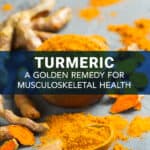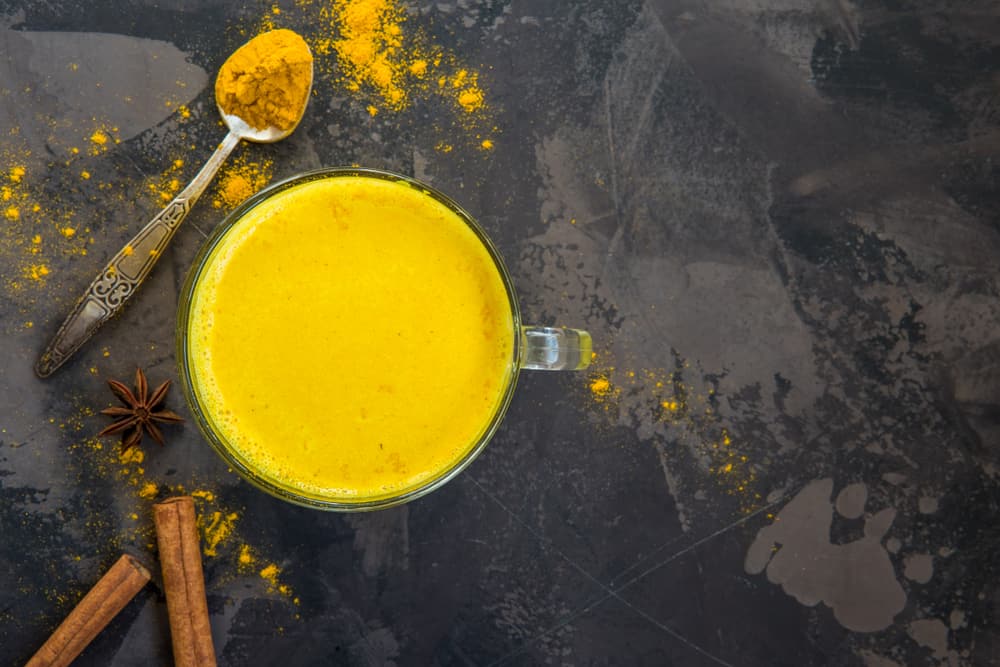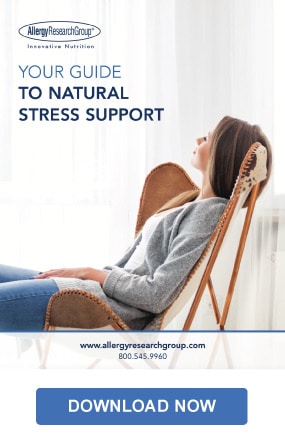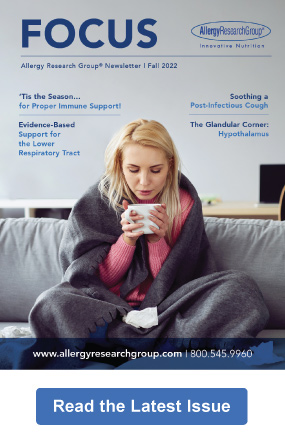Share this post

Curcuminoids, the famous active compounds from turmeric, deliver benefits for joint health and exercise recovery
Liquid gold. Golden milk. That brilliant saffron-hued spice. We hear a lot about turmeric these days—also known as Curcuma longa—a member of the ginger family, and native of Southeast Asia.[1]
Valued for its brilliant hue and distinctive spicy-bitter flavor, its use as a dye, a spice, and in religious ceremonies dates back nearly 4,000 years.[2],[3] Turmeric is a mainstay in Ayurvedic and Chinese medicine, thanks in large part to curcuminoids—three bright golden-colored, lipophilic polyphenols, collectively known as “curcumin” derived from the plant’s rhizomes.[4],[5] Curcumin was first isolated almost 200 years ago.[6]
The anti-inflammatory action of curcumin is widely known, and the benefits of this property may not only improve the pain of arthritis, but also recovery from exercise.
Curcuminoids exhibit antioxidant, anti-inflammatory, antiviral, antibacterial, and antifungal activity.[7] The anti-inflammatory action of curcumin is widely known, and the benefits of this property may not only improve the pain of arthritis, but also recovery from exercise.[8],[9] Considering that curcuminoids only make up 2-5% of turmeric, however, it’s important to use curcumin products that have been shown to be bioavailable when seeking out the maximum health benefits of turmeric.
Anti-inflammatory properties of curcumin
Curcumin is well recognized for its ability to boost the activity of anti-inflammatory molecules in the body.[10],[11] It functions as a potent antioxidant, proving helpful in a variety of conditions including diabetes, osteoarthritis, autoimmune disease, cardiovascular conditions, and neurodegenerative diseases.[12],[13],[14],[15] It increases activity of two of the body’s main antioxidant enzymes, superoxide dismutase (SOD) and catalase,[16],[17] also increasing levels of glutathione in both cellular and human studies.[18],[19]
Curcumin functions as a potent antioxidant, proving helpful in a variety of conditions including diabetes, osteoarthritis, autoimmune disease, cardiovascular conditions, and neurodegenerative diseases.
Curcumin can trigger the expression and production of interleukin 10 (IL-10), a cytokine with potent inflammation-regulating activity.[20] IL-10 is a key factor controlling a variety of inflammatory conditions, including osteoarthritis (OA) and rheumatoid arthritis (RA), and has been described by some researchers as a “master switch” that can turn off inflammatory activity in the body.[21] Curcumin’s demonstrated ability to boost IL-10 production suggests the usefulness of this golden remedy in alleviating inflammation and modulating the immune response.[22]
Curcumin and arthritis
Several studies have confirmed the beneficial effects of curcumin in humans with either rheumatoid arthritis or osteoarthritis.[23]
RA is a chronic, systemic, autoimmune disease that often damages both the bone and cartilage, leading to pain, limited mobility, and in some cases, frank physical disability.[24] In one 90-day randomized, double-blind, placebo-controlled study, a bioavailable form of curcumin at dosages of either 250 mg or 500 mg twice daily was shown to significantly alleviate symptoms of RA compared to the placebo group, which had no improvement.[25] Other studies, both in humans and animals, have shown similar benefits.[26],[27]
Several clinical studies have shown curcumin improves pain, physical function, and quality of life scores in individuals with OA.
Curcumin has also demonstrated usefulness in the management of OA, a chronic joint condition that affects over 250 million people worldwide and is marked by inflammation, including elevated inflammatory cytokine levels.[28],[29] Over 80 percent of individuals over the age of 55 experience OA in at least one joint.[30] In a randomized, double-blind, placebo-controlled trial, individuals with OA of the knee who received 500 mg of curcuminoids three times daily experienced significantly fewer clinical symptoms than the placebo group, including improvements in pain and physical function scores.[31] Several other clinical studies have shown similar improvements in pain, physical function, and quality of life scores in individuals with OA.[32]
Potent effects on muscle pain
Joint and muscle pain often go hand in hand, and curcumin also shows promise in reducing the inflammation and sore muscles resulting from intense exercise. In one randomized, placebo-controlled, crossover pilot study conducted on ten adult rugby players, curcumin reduced several indicators of post-exercise muscle damage.[33] In another double-blind, randomized, placebo-controlled study the impact of bioavailable curcumin on muscle damage and recovery following a session of running downhill was assessed.[34] In this study, 200 mg of bioavailable curcuminoids taken daily was observed to attenuate performance decrements following a muscle damaging exercise (downhill running), suggesting it may lead to improvements in training if used on an ongoing basis.
Curcumin bioavailability
Curcumin’s array of impressive health benefits is often limited by the naturally poor bioavailability of curcuminoids, as these compounds naturally are minimally absorbed and rapidly eliminated from the body.[35] A new curcumin formulation shows greater uptake and bioavailability than standard curcumin and even many of the “enhanced” phytosome formats currently available.[36],[37] This curcumin formulation – which entails using a molecular dispersion process to dissolve a highly purified powder, consisting of at least 95% curcuminoids, in a water-soluble base, followed by the addition of antioxidants to protect the curcumin from degradation – showed a 45.9-fold increase in oral absorption as compared with other methods of preparation in one study, as well as dramatically increased serum concentrations after 12 hours.
Summary
Curcumin’s popularity and reputation as a golden botanical continues to increase as studies confirm its traditionally acclaimed properties and health benefits, and as scientists find means to dramatically enhance its bioavailability. Evidence to date suggests that curcumin has both analgesic and anti-inflammatory activities useful for the management of both RA and OA. In addition, curcumin may help reduce the inflammation and sore muscles resulting from intense exercise.
Click here to see References
[1] Priyadarsini KI. The chemistry of curcumin: from extraction to therapeutic agent. Molecules. 2014;19 (12):20091-112.
[2] Prasad S, Aggarwall BB. Turmeric, the golden spice: from traditional medicine to modern medicine. In: Benzie IFF, Wachtel-Galor S, eds. Herbal Medicine: Biomolecular and Clinical Aspects. 2nd ed. Boca Raton, Florida: CRC Press/Taylor & Francis; 2011: Chapter 13.
[3] Tayyem RF, et al. Curcumin content of turmeric and curry powders. Nutr Cancer. 2006;55(2):126-31.
[4] Nelson, KM, Dahlin JL, et al. The essential medicinal chemistry of curcumin. J Med Chem. 2017;60(5):1620-37.
[5] Kocaadam B, Şanlier N. Curcumin, an active component of turmeric (Curcuma longa), and its effects on health. Crit Rev Food Sci Nutr. 2017 Sep 2;57(13):2889-95.
[6] Aggarwal BB, et al. Curcumin: the Indian solid gold. Adv Exp Med Biol. 2007; 595:1-75.
[7] Aggarwal BB, Harikumar KB. Potential therapeutic effects of curcumin, the anti-inflammatory agent, against neurodegenerative, cardiovascular, pulmonary, metabolic, autoimmune and neoplastic diseases. Int J Biochem Cell Biol. 2009 Jan;41(1):40-59.
[8] Amalraj A, et al. Biological activities of curcuminoids, other biomolecules from turmeric and their derivatives – a review. J Tradit Complement Med. 2016 Jun 15;7(2):205-33.
[9] Nicol LM, et al. Curcumin supplementation likely attenuates delayed onset muscle soreness (DOMS). Eur J Appl Physiol. 2015 Aug;115(8):1769-77.
[10] Boonjaraspinyo S, et al. Turmeric reduces inflammatory cells in hamster opisthorchiasis. Parasitol Res. 2009;105:1459-63.
[11] Sriraj P, et al. Effect of curcumin on pathogenesis of hamster opisthorchiasis through apoptosis-related gene expression. Southeast Asian J Trop Med Public Health. 2009 Nov;40(6):1208-15.
[12] Sahebkar A, et al. Effect of curcuminoids on oxidative stress: a systematic review and meta-analysis of randomized controlled trials. J Funct Foods. 2015;18:898-909.
[13] Wang XT, et al. Ursolic acid ameliorates oxidative stress, inflammation and fibrosis in diabetic cardiomyopathy rats. Biomed Pharmacother. 2017 Nov 16;97:1461-7.
[14] Di Pietro M, et al. Infectious agents in atherosclerotic cardiovascular diseases through oxidative stress. Int J Mol Sci. 2017 Nov 18;18(11).
[15] Aggarwal BB, Harikumar KB. Potential therapeutic effects of curcumin, the anti-inflammatory agent, against neurodegenerative, cardiovascular, pulmonary, metabolic, autoimmune and neoplastic diseases. Int J Biochem Cell Biol. 2009 Jan;41(1):40-59.
[16] Xie Z, Wu B, et al. Curcumin alleviates liver oxidative stress in type 1 diabetic rats. Mol Med Rep. 2018 Jan;17(1):103-8.
[17] Jaiswal SK, et al. Curcumin mediated attenuation of carbofuran induced toxicity in the heart of Wistar rats. Cell Mol Biol (Noisy-le-grand). 2017 Jul 31;63(6):12-7.
[18] Biswas SK, et al. Curcumin induces glutathione biosynthesis and inhibits NF-kappaB activation and interleukin-8 release in alveolar epithelial cells: mechanism of free radical scavenging activity. Antioxid Redox Signal. 2005 Jan-Feb;7(1-2):32-41.
[19] Panahi Y, et al. Mitigation of Systemic Oxidative Stress by Curcuminoids in Osteoarthritis: Results of a Randomized Controlled Trial. J Diet Suppl. 2016;13(2):209-20.
[20] Ma X, et al. Regulation of IL-10 and IL-12 production and function in macrophages and dendritic cells. F1000Res. 2015 Dec 17;4.
[21] Oft M. IL-10: master switch from tumor-promoting inflammation to antitumor immunity. Cancer Immunol Res. 2014 Mar;2(3):194-9.
[22] Mollazadeh H, et al. Immune modulation by curcumin: the role of interleukin-10. Crit Rev Food Sci Nutr. 2017 Aug 11:1-13.
[23] Henrotin Y, et al. Curcumin: a new paradigm and therapeutic opportunity for the treatment of osteoarthritis: curcumin for osteoarthritis management. SpringerPlus 2013 Dec;2(1):56.
[24] Klareskog L, et al. Rheumatoid arthritis. Lancet. 2009;373:659-72.
[25] Amalraj A, et al. A novel highly bioavailable curcumin formulation improves symptoms and diagnostic indicators in rheumatoid arthritis patients: a randomized, double-blind, placebo-controlled, two-dose, three-arm, and parallel-group study. J Med Food. 2017 Oct;20(10):1022-30.
[26] Chandran B, Goel A. A randomized, pilot study to assess the efficacy and safety of curcumin in patients with active rheumatoid arthritis. Phytother Res. 2012 Nov;26(11):1719-25.
[27] Funk JL, et al. Turmeric extracts containing curcuminoids prevent experimental rheumatoid arthritis. J Nat Prod. 2006 Mar;69(3):351-5.
[28] Goldring MB. Osteoarthritis and cartilage: the role of cytokines. Curr Rheumatol Rep. 2000 Dec;2(6):459-65.
[29] Rahimnia AR, et al. Impact of supplementation with curcuminoids on systemic inflammation in patients with knee osteoarthritis: findings from a randomized double-blind placebo-controlled trial. Drug Res. 2015;65:521-5.
[30] UpToDate. Risk factors for and possible causes of osteoarthritis. Updated Oct 06, 2017. Accessed July 27, 2018.
[31] Panahi Y, et al. Curcuminoid treatment for knee osteoarthritis: a randomized double-blind placebo-controlled trial. Phytother. Res. 2014 Nov;28(11):1625-31.
[32] Chin KY. The spice for joint inflammation: anti-inflammatory role of curcumin in treating osteoarthritis. Drug Des Devel Ther. 2016 Sep 20;10:3029-3042.
[33] Delecroix B, et al. Curcumin and piperine supplementation and recovery following exercise induced muscle damage: a randomized controlled trial. J Sports Sci Med. 2017 Mar 1;16(1):147-53.
[34] Oliver JM, et al. Novel form of curcumin attenuates performance decrements following muscle damaging exercise. The FASEB Journal. 2017 Apr;31(1_supplement):lb415.
[35] Anand P, et al. Bioavailability of curcumin: problems and promises. Mol Pharm. 2007 Nov-Dec;4(6):807-18.
[36] Cuomo J, et al. Comparative absorption of a standardized curcuminoid mixture and its lecithin formulation. J Nat Prod. 2011;74(4):664-9.
[37] Jäger R, et al. Comparative absorption of curcumin formulations. Nutr J. 2014 Jan 24;13:11.
The information provided is for educational purposes only. Consult your physician or healthcare provider if you have specific questions before instituting any changes in your daily lifestyle including changes in diet, exercise, and supplement use.
Share this post
Related posts
The Power of Echinacea
A natural alternative for sneeze and sniffle prevention Perhaps you know it for its distinct flower – a pronounced brown central cone, surrounded by delicate purple petals – and its common botanical name, purple coneflower. Or maybe, you know it as a natural remedy to take for protection against the sniffles and sneezes of…
The Antiviral and Anti-Inflammatory Potential of Quercetin
The value of quercetin for respiratory health beyond allergies Quercetin is another well-known member of the polyphenol family. Considered a flavonoid type of polyphenol, quercetin is found in many fruits and vegetables, including onions, apples, cherries, broccoli, tomatoes, and berries, as well as green tea. We look to quercetin most often seasonally as a…
Reducing the Risk of Alzheimer’s
A proactive approach to reducing the risk of dementia Anyone who has watched the health of a love one decline after a diagnosis of Alzheimer’s disease knows all too well the challenges that come with this condition. Not just memory loss, but personality changes, impaired reasoning skills, and even motor issues – dementia slowly…
Molecular Hydrogen and Autoimmune Disease
Multiple clinical studies report improvements in autoimmune disease with hydrogen treatment Although hydrogen (H2) is well known as an alternative fuel, recognized as such in the Energy Policy Act of 1992, only in 2007 did it begin to really make the scene in medicine. Although used for the purpose of preventing decompression sickness in…
Botanicals for Asthma and Lung Health
Herbal tools to help you beat asthma and lung infections As we’ve learned all too well recently, we can’t take lung health for granted. Severe respiratory infections are on the rise, in addition to the chronic burdens of asthma, allergies, and air pollution.[1],[2] On top of that, many of us are experiencing smoke and…
Craving Sweets? You Might Be Stressed!
When stress talks louder than the stomach Most people crave sweet or salty foods like cookies, chocolates, or potato chips when under stress, and research offers us an understanding of why.[1] Scientists have discovered receptor sites on taste buds that respond to the hormones cortisol, cortisone and corticosterone, altering our taste perception when we’re…
Categories
- Botanicals (56)
- GI Health (53)
- Healthy Aging (121)
- Immune Support (39)
- In The News (39)
- Kids Health (21)
- Stress and Relaxation (50)
- Uncategorized (1)
- Video (9)
- Vitamins & Minerals (51)




